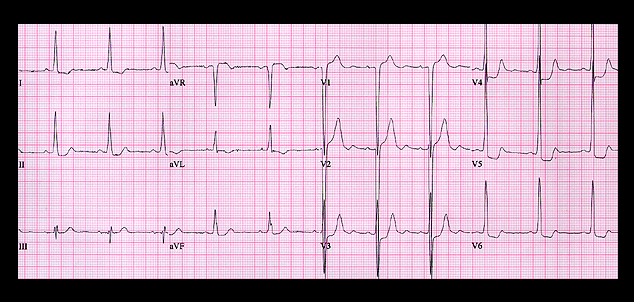
This ECG is from the same patient. It was recorded during sinus rhythm when the rate was 70 per minute (RR interval = 0.88 seconds). The QRS duration is now 0.09 seconds (90 msec) compared to the QRS durations of 0.10 to 0.13 seconds -depending on the RR intervals- shown on the previous tracing. In addition, the tracing shows QRS, ST segment and T wave changes that are consistent with left ventricular hypertrophy.
